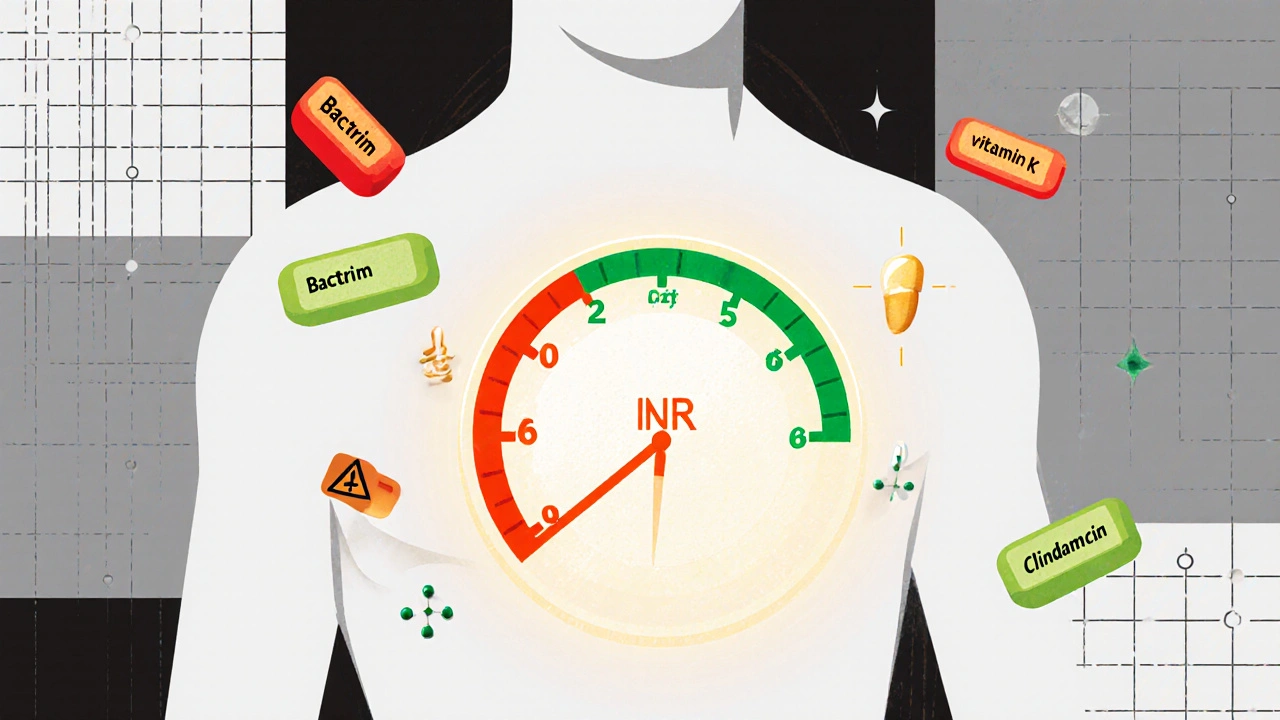Antibiotic and Warfarin Bleeding Risks: What You Need to Know
When you take warfarin, a blood thinner used to prevent clots in people with atrial fibrillation, artificial heart valves, or a history of deep vein thrombosis. Also known as Coumadin, it works by blocking vitamin K, which your body needs to form clots. But when you add certain antibiotics, medicines used to kill or slow the growth of bacteria, things can go wrong—fast.
Not all antibiotics affect warfarin the same way. Some, like ciprofloxacin, trimethoprim-sulfamethoxazole, and metronidazole, can make warfarin stronger by messing with how your liver breaks it down. That means your blood takes longer to clot, and even a small cut or bump can lead to serious bleeding—bruising without reason, nosebleeds that won’t stop, blood in your urine or stool, or sudden headaches from internal bleeding. Older adults, people with kidney problems, or those on multiple meds are at higher risk. The FDA and CDC have flagged this combo as one of the most common causes of emergency hospital visits for drug interactions.
It’s not just about the antibiotic itself. Your gut bacteria help process vitamin K, and antibiotics wipe them out. Less vitamin K means warfarin works even harder. That’s why bleeding risk often spikes within the first few days of starting an antibiotic—even if you’ve been on warfarin for years without issues. Your INR (a blood test that measures clotting time) can jump overnight. That’s why doctors often check your INR within 3 to 5 days after starting a new antibiotic, and why you should never start or stop any med without talking to your pharmacist or prescriber.
You won’t find this warning on every antibiotic bottle. But if you’re on warfarin, every new prescription should trigger a double-check. Even over-the-counter stuff like ibuprofen or herbal supplements like garlic or ginkgo can add to the risk. The good news? You don’t have to avoid antibiotics entirely. Some, like amoxicillin or azithromycin, are safer choices. But you need to know which ones to watch for—and what signs to act on before it’s too late.
Below, you’ll find real-world guides from people who’ve been there: how to spot early bleeding signs, what labs to ask for, which antibiotics are safest, and how to talk to your doctor without sounding paranoid. These aren’t theoretical tips—they’re from patients, pharmacists, and clinicians who’ve seen what happens when this interaction slips through the cracks.

Managing Warfarin and Antibiotics: Common Interaction Issues
- Nov, 1 2025
- 9
Warfarin and antibiotics can interact dangerously, raising bleeding risk. Learn which antibiotics are safest, when to check your INR, and how to avoid serious complications without stopping your medication.
Categories
- Health and Wellness (51)
- Medicine (36)
- Health and Medicine (23)
- Women's Health (9)
- Mental Health (8)
- Men's Health (7)
- Beauty and Wellness (4)
- Health Information (4)
Archives
- December 2025 (12)
- November 2025 (25)
- October 2025 (27)
- September 2025 (14)
- August 2025 (3)
- July 2025 (2)
- June 2025 (2)
- May 2025 (3)
- April 2025 (4)
- March 2025 (4)
- February 2025 (2)
- January 2025 (3)
- online pharmacy
- medication safety
- dietary supplement
- health benefits
- dietary supplements
- prevention
- fertility
- online pharmacy Australia
- treatment
- treatment options
- benefits
- connection
- drug interaction
- drug interactions
- pregnancy
- Cancer Treatment
- depression medication
- antidepressants
- quality of life
- anxiety treatment
